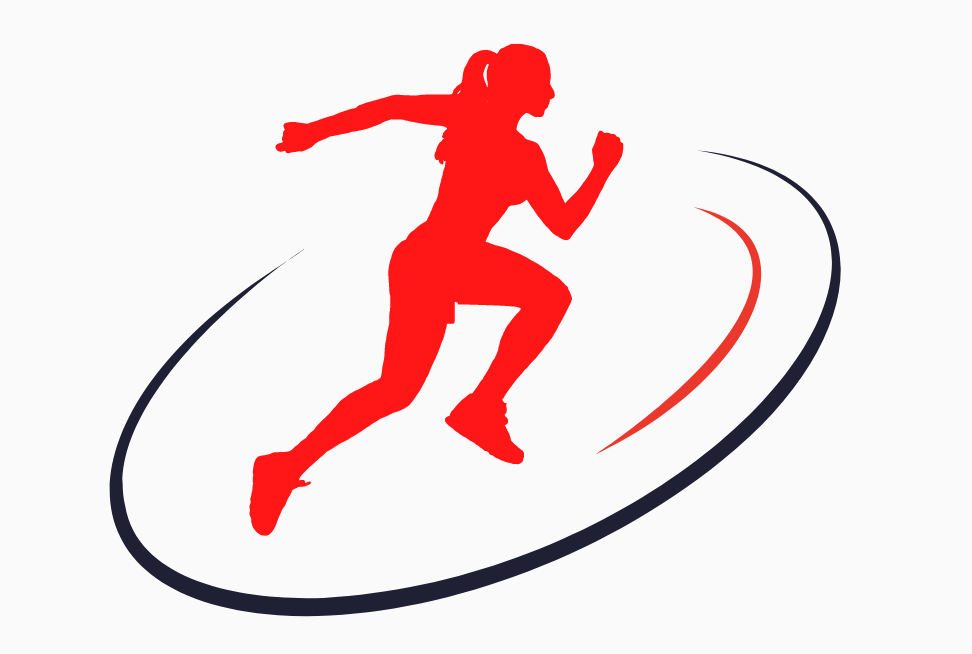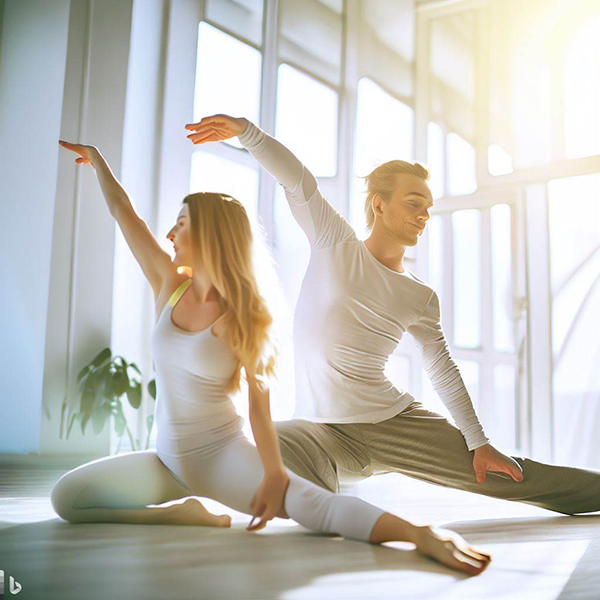Yoga Poses For 2: Strengthening Bonds and Enhancing Well-Being
Doing yoga is not about just posing, but connecting and discovering – and idealised poses for two bring us into a mutually rewarding sense of wellbeing. Let’s see what yogic poses meant for two can be for your relationship and you.
The Power of Partner Yoga
Partner yoga isn’t really about ‘never say never’, but about beginning with a partner (or partners) whom you trust, then adding elements of communication and intimacy to your yoga practice. If you breathe and move in sync, or if you balance on one another, you are sharing energy. You cannot hide your struggles and difficulties when you’re in this energetic flow.
Experience the Connection
Consider the Partner Forward Fold, where you and your partner bend forward together, your bodies supporting one another’s mass, and your extremities working together to find equilibrium. The image beckons you to imagine leaning into each other, taking the world’s weight, even one another’s, off your shoulders. The wisdom translates seamlessly, on and off the mat.
Building Trust Through Movement
Among its most powerful benefits, partner yoga fosters intimacy and compassion via a delicious exchange of trust. It takes Picasso-like imagination to compose postures like the Partner Tree Pose. Standing directly beside one another, each of you cradles the other’s leg, as if you were standing together as trees in a clear cut, balanced on trillions of molecules of soil.
Enhancing Communication and Intimacy
The nature of partner yoga poses means that precise communication and mutual understanding is crucial to the process. Whether it’s helping your partner find the right position in a pose or readjusting your own alignment, each movement is an invitation to go deeper, and builds trust and intimacy along the way.
Exploring Playfulness and Creativity
As an added bonus, partner yoga is fun and playful, and allows you to get creative in your practice by putting spins on the regular poses, like in Partner Boat Pose (where you balance on each other’s feet, teetering like a seesaw), and Partner Wheel Pose (where you arch back and lift each other up into a heart-opening stretch).
Embracing Vulnerability and Growth
Setting aside ego is required, as is openness and, more crucially perhaps, a sense of playfulness, to engage in yoga with a partner – whether that’s your partner in life, or a mere acquaintance who sheepishly yells ‘towel’ across the room at you. As you perch on each other’s thin waists, manoeuvre your wrists and ankles into knots in each other’s backs, you will undoubtedly lose your centre of balance at times. You’ll veer off course, and sometimes fall, but you’ll also experience exquisite releases and moments of deep catharsis that steal your breath and leave you both laughing out loud. Together, you’ll waddle to and from the mat, laughing loudly along the way. And, sharing a space with a willing participant, you’ll eventually come to learn how each other’s bodies move, how to support, bolster and savour one another’s minor victories.
Deepening Connection Beyond the Mat
While partner yoga brings huge benefits on the mat, you also take them off the mat with you. As you deepen your connection on the mat, you deepen your connection off the mat. Whether you feel like you can communicate better, listen more attentively, or you’re just having fun hanging out together, you’ll feel the wellness spilling over.
Conclusion: The Power of Connection
To conclude, practicing yoga poses for two is a great opportunity to bond with your partner on a deeper level and improve your well-being at the same time. Using this experience to build trust, communication and connection, you’ll promote unity in your relationship, reset your “couple’s” harmony and encourage a balanced lifestyle for each member of your pair. So spread your mats, hold hands, and practise on!
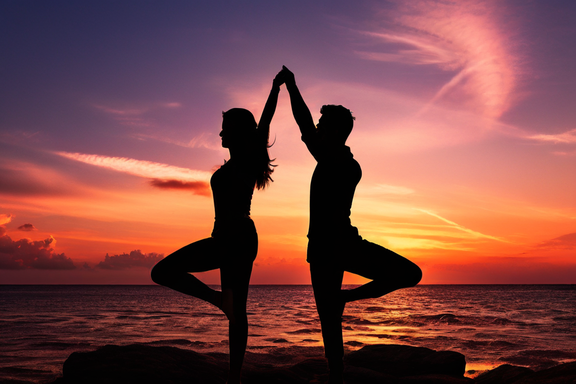
Benefits of Yoga Poses for 2: Strengthening Bodies and Bonds
- Increased Flexibility: In part because of deep stretching, participants can gain greater flexibility in partner yoga than they might in an individual session.
- Better Balance: Partner challenges your balance (proprioception and body awareness).
- Improved Strength: Poses arrest through partner assistance activate muscles you might otherwise ignore.
- Partner stretches let you go further, stretching more effectively Many of the techniques demonstrated use a partner to help the stretcher go further, stretching more effectively.
- Group: Doing yoga together helps us connect and collaborate, strengthening relationships through group bonding and sense of shared experience. Praxis from Yoga Journal, December 2014, which explores the psychological underpinnings of yoga by brain researcher Richie Davidson and Prabhakar Ferriage.
- Effective Communication: Partner poses demand clear communication to synchronize movements, enhancing interpersonal skills.
- Pose-to-pose Trust Building: Moving together in sync, assisting and being assisted in poses, creates trust, particularly in the physical experience, but also in the emotional experience.
- Positive Energy Exchange: This kind of exchange of energy and support works positively and creates healthy synergy for all.
- Mindfulness Enhancement: Partner yoga strengthens the commitment to being in the moment and increases mindful awareness during the practice.
- Stress Reduction: Together we relax by slowing our breathing, being together, connecting.
- Variety In Practice: Partner poses (and other props, like blocks and blankets) add variety to sequences, essentially adding interest to the yoga practice, breaking up the monotony of a straight-forward sun salute sequence with warrior sequences.
- Yoga Boost: Practicing with a partner is motivating and will keep you coming back to your mat regularly.
- Core-strengthening: Many partner poses recruit the core muscles, thus building strength and stability in this area.
- Mutual Support: Co-action provides plenty of physical and emotional support, a feeling of being in it together and growing together.
- Enhanced Alignment: Partners can help you find the right alignment, allowing you to fully reap the benefits of the pose.
- Heart opening: Some partner poses open up and expand the chest and heart region to release emotional tension and cultivate a sense of vulnerability.
- Co-created Laughing: Playfulness is often germane to partner yoga, and it’s not uncommon, as a result, for students to laugh.
- Empowerment: Successfully achieving partner poses can boost self-confidence and self-esteem.
- Emotional Connection: The shared physical activity deepens emotional connections and nurtures understanding.
- Joint Creativity: Partner yoga encourages participants to collaboratively explore and create new poses.
And so, when 2 engage in yoga poses together, they are likely to reap not only individual benefits in their physical health, but also an improvement in reciprocal support, relationship quality and a greater sense of connection – with their yoga practice and their yoga partner.
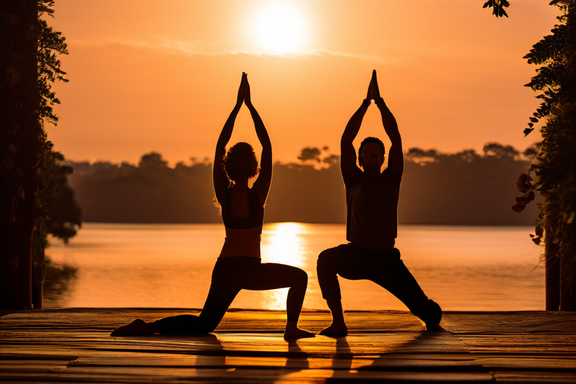
Testimonials About Yoga Poses For 2
“My husband and I now have an entirely new relationship thanks to partner yoga. We were always very athletic people, but doing partner yoga where we do yoga poses together has been wonderful. Today my husband and I are so flexible and we’re smiling all the time. It’s because we really have to trust each other, to verbalise to each other, and to stretch with each other. We never had communication like this until we started doing these poses. We’re so thankful for partner yoga.” – John Alva
“We’ve been best friends for years and love doing new things together. When we decided to give partner yoga a try, it was an absolute winner. Being able to rely on each other to guide us into different poses has been both empowering and exhilarating. It’s not that we’re achieving any great physical feats – although with increased range of motion, we probably are – it’s that we’re doing it together and laughing all the while. Without exaggeration, these poses challenge us physically and emotionally. Partner yoga has become our go-to activity. We keep coming back because it strengthens our friendship in new ways that we didn’t anticipate.” – William Sands
Possible Concerns and Limitations:
Fitness Levels: Not all couples yoga positions might be appropriate for individuals who are new to yoga or have limited flexibility or strength levels. Certain poses might require higher fitness and coordination levels to execute, which could lead to strains or discomfort for individuals who have no prior experience with yoga.
Injury Risk: While partner yoga can improve flexibility and strength, injury can also occur if the poses attempt without proper alignment and guidance. Accidentally going for incorrect pose, or forcing oneself beyond the limit, can lead to sprains, strains and other injuries, especially to beginners who don’t know the right techniques for doing yoga.
Communication Issues: Partner yoga requires robust communication between the participants. If too much detail isn’t exchanged about movements, goals, physical comfort, etc, there’s a high chance of becoming imbalanced, injuring oneself, or just plain frustration!
Touch and being close: Partner yoga can involve touch and close proximity. You might have your own limitations regarding contact and being close to other people, that can make the practice harder to enjoy and have good outcomes.
Physical Restrictions:
Injuries and Medical Issues: If you have a previous injury, a medical condition or a chronic pain condition, use your judgment and be careful with partner yoga poses. Many of the poses may cause greater problems with your previous injuries, or new problems in other areas of your body.
Pregnancy: for those who are pregnant, avoid poses that put pressure on the abdomen or overly twist the body, which could be harmful to both mother and baby.
Certain Mobility Issues: Anyone with limited mobility – the elderly, persons with physical disabilities – can attempt partner yoga poses if a good instructor is on hand, able to tailor poses would suit the person perfectly.
Importance of Consulting a Health Professional:
Any time you are planning to start a new exercise regimen, whether it be partner yoga or otherwise, check first with a healthcare professional such as your physician or a yoga professional who has appropriate certification through a reputable yoga school. A healthcare professional can advise you on whether your practice should include partner yoga considering your particular health history and physical capabilities. There are several reasons to do so:
Safety: they will have the background to ensure that partner yoga is a safe option for you, depending on your particular health status and any pre-existing medical issues or traumas, such as a hip injury.
Adaptability: It’s a practice that can be modified by a health professional to suit your individual needs, asking that you participate in postures that line up with your physical abilities and desire.
Injury Prevention: A health professional can tell you what you should avoid based on your particular anatomy and what places you at potential risk.
Just remember that it should be fun – remember, we’re doing yoga, not ancient ballet – and if you follow some of these suggestions and seek out a health professional and a knowledgeable teacher, you’ll likely find that your practice of bolasana is a charmingly enhanced experience.(Wikipedia).
Questions and Answers:
Poses for yogs What is 2 yoga? Most yoga postures are done either solitarily or with a person standing beside you guiding you through the sequence. But there are also yoga postures meant for two people – yogi and yogini! Yoga poses for 2! Pairs poses needs the combination of two body and mind to hold up the posture. Some pairs poses need extra balance, flexibility and communication between two yogis.
Some folks may wonder whether beginner yogis squeeze into yoga-poses for 2 with a partner. This is certainly possible, however, in the beginning, keep it very simple, and expect to practice for several months or years before you dive into a full plate of partner yoga possibilites. Attending with classes or finding a seasoned partner is the obvious recommendation.
What are the advantages of 2 persons doing yoga poses together? The answer is: flexibility balance and strength in body, own or of the partner. A yoga poses for two is not only practise for balance, strength, flexibility and co-ordination of body, but it is also training for minds, and the hearts in a couple of persons. It is a great way to add variety to your yoga practice, and a great way to feel a sense of accomplishment together. It deepens the connection between you and your partner, increasing trust and meaningful communication.
Do I need a partner to work with at all? Having a partner makes these poses even better, but many poses can be adapted to work solo with the aid of a wall or a yoga block as a prop for support.
Safety is paramount in poses for 2? Absolutely. Communication is key with your partner – let him or her know if you are uncomfortable with anything, or if you have a physical limitation that is not possible. Don’t try to force anything – if you have injuries or health conditions, speak with your health professional before attempting partner poses.
Do you think it is enough for partner yoga to improve the relationship? Not really because according to my view it is no use that other person doing a little helpful things so that it can make can make others happier, partners coming and doing yoga together more closely can build up a motivation to workout together at home . It can improve the relationship, because this yoga need an assistant to workout each poses that makes sure partners build up a trust, empathy and can connect better. Why?because firstly, it helps both persons to build teamwork and communicate, and secondly shared goals that can make people learn to consider each other feeling during this process and most importantly improve.
Related:
 Acro Yoga: Uniting Balance, Trust, and Connection on the Mat
Acro Yoga: Uniting Balance, Trust, and Connection on the Mat
 Unleash Joy and Wellness: The Magic of Puppy Yoga
Unleash Joy and Wellness: The Magic of Puppy Yoga
 Exploring the Benefits and Practices of Sweat Yoga
Exploring the Benefits and Practices of Sweat Yoga
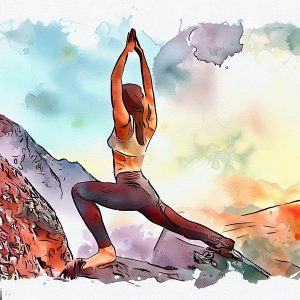 Buti Yoga: A Fusion of Movement, Empowerment, and Transformation
Buti Yoga: A Fusion of Movement, Empowerment, and Transformation
 Yoga Bolster: Enhancing Your Yoga Practice with Comfort
Yoga Bolster: Enhancing Your Yoga Practice with Comfort
 Kriya Yoga: The Path to Inner Transformation and Spiritual Awakening
Kriya Yoga: The Path to Inner Transformation and Spiritual Awakening
 Summit Climbing Yoga And Fitness
Summit Climbing Yoga And Fitness
 Yoga-Go: The Ultimate Fitness App for Your Holistic Well-Being
Yoga-Go: The Ultimate Fitness App for Your Holistic Well-Being
